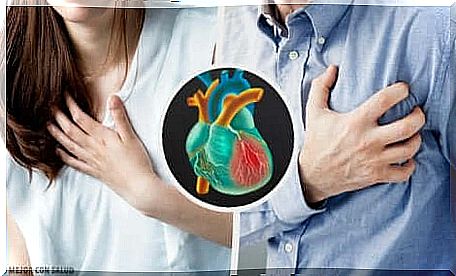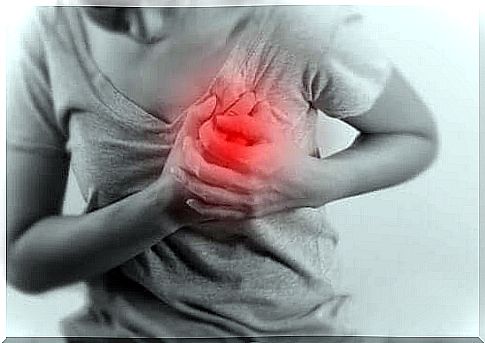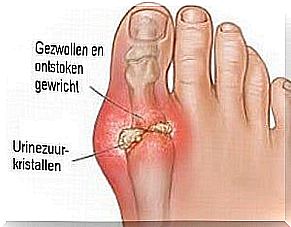Recognize The Symptoms Of A Heart Attack

Many people are not aware of the symptoms of a heart attack, even though it is one of the leading causes of death in the world. As a result, people are not always treated on time. Knowing how to recognize the symptoms of a heart attack and seeing a doctor as soon as possible is important to minimize damage.
On the other hand, heart attacks are one of the leading preventable causes of death as they are often related to lifestyle. Therefore, we explain some risk factors associated with cardiovascular disease.
The symptoms of a heart attack
Myocardial infarctions or heart attacks occur when the arteries are blocked. This causes a lack of blood supply and therefore oxygenated blood cannot reach the myocardial cells.
How quickly the problem is successfully treated and how much heart tissue dies determines the consequences for the patient’s health. Therefore, learning to recognize the symptoms of a heart attack is one of the most important keys to surviving a heart attack and minimizing damage.
1. Chest Pain

The first symptom we will discuss is chest pain. Patients describe this pain as tightness, as if there is a heavy weight on their chest. However, sometimes this is not an intense pain, which makes people not think of a heart attack. In addition, people may think that the pain is caused by other factors such as anxiety, stress and psychological factors.
In addition, chest pain is the most common symptom in men. In women, acute pain in the upper body, neck, back or jaw is more common. This is one of the reasons why heart attacks in women are not recognized as quickly as in men.
We are used to seeing pain in the chest or left arm as one of the main symptoms of a heart attack. However, pain in the back or neck can also be common complaints that occur with a (threatened) heart attack.
2. Intense Shortness of Breath
Sometimes chest pain is accompanied by severe shortness of breath. Sudden and unexplained fatigue is also common in women. However, many people ignore these symptoms because they are usually mild and only last a few days.
3. Nausea

Nausea and vomiting are other symptoms of a heart attack. However, this occurs more often in women than in men. Remember that if someone experiences nausea and vomiting along with the other symptoms of a heart attack, they will likely need immediate medical attention. It could be a heart attack or another serious problem.
As you can see, the symptoms of a heart attack can vary based on gender and also per person. In most cases, they almost never all occur at the same time.
When a heart attack is imminent or starting, the person may feel dizzy and lightheaded and ask to sit down. In many cases, the symptoms appear and disappear within a few minutes. This is another reason why many people ignore these signs of it.
Heart Attack Risk Factors
Aside from intense chest pain, other symptoms may also be present. These symptoms may indicate a heart attack, but are not always related to this problem. These include complaints such as:
- Fatigue
- Dizziness and Nausea
- jaw pain
- Breathing difficulties
- Discomfort or pain in the arms
- Neck or back pain
That is why it is also important to consider whether someone meets one or more of the risk factors for heart attack. Some of the risk factors include heart disease, obesity, and smoking. In addition, you should consider whether the person with symptoms is under a lot of stress.
Another important factor to consider is age. The risk of heart attack skyrockets from the age of 40 in men and 50 in women.
Therefore, to best prevent heart disease, you can make some changes in your lifestyle. For example, it’s best to try:
- to move more.
- following a balanced diet low in salt and fat.
- to quit smoking.
Conclusion on the symptoms of a heart attack
If you or a loved one has been diagnosed with heart disease or a condition that increases the risk of heart attacks, try to follow the doctor’s instructions. Also, be sure to adopt a healthy lifestyle. We hope our guide to recognizing the symptoms of a heart attack is helpful to you.









